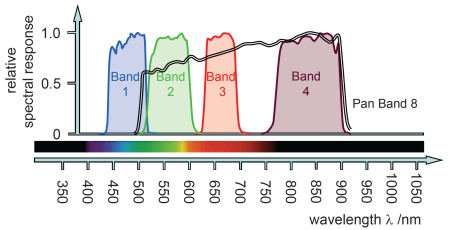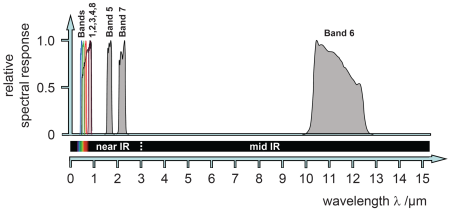1. Light and Radiation
Spectral analysis: Colour glass filters (2/4)
The Thematic Mapper (TM) aboard the Landsat 5 satellite uses optical filters to take multispectral imagery.
The transmission of the TM Bands is depicted in the following graphs. For a better comparison the curves are normalised to unity.


